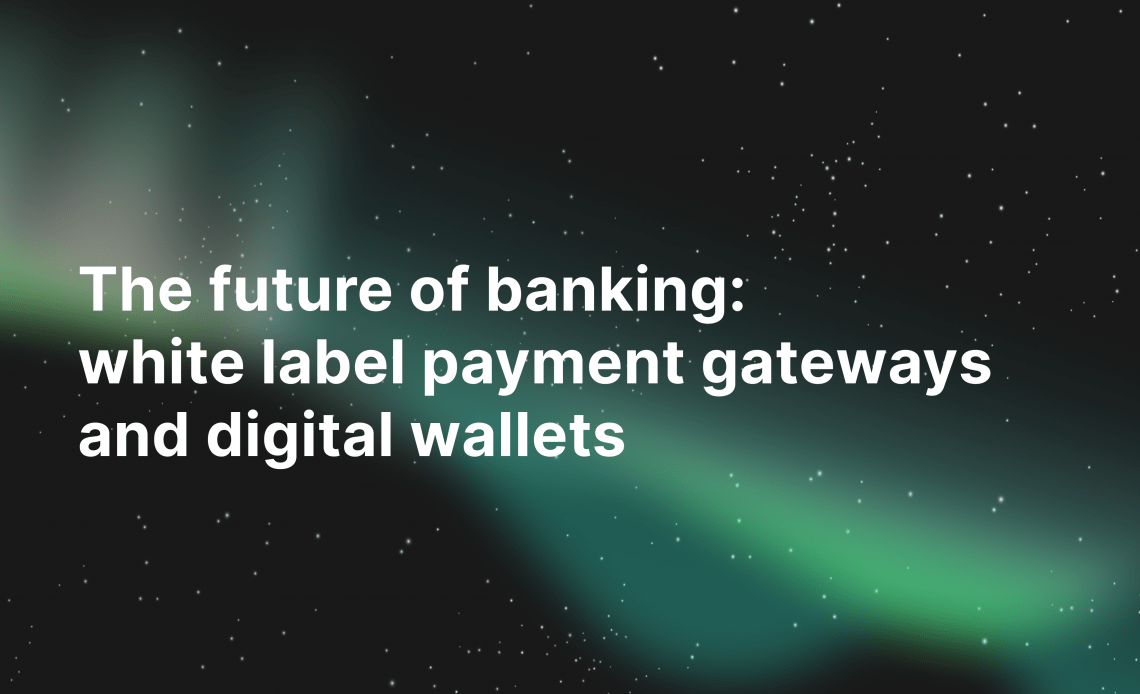Recently updated on April 18, 2025
With the ever-evolving technological advancements, the banking industry has undergone a significant transformation in recent years. Today, it’s more tech-driven, and consumers are now reliant on online banking services and payment systems. It also means that new digital banking challenges appear.
Digital wallets and white-label payment gateways are two innovations that have revolutionized the way transactions are conducted in the banking sector. In this post, we’ll take a closer look at these payment systems and how they could shape the digital banking future.
The future of banking is inevitably being shaped by technology, and businesses with an eye on the horizon have a fantastic opportunity to stay ahead of the curve with these innovative payment gateways.
These technologies are not only changing how we transact but also enabling services like online loans same day to be approved and disbursed on the same day.
So, let’s dive in!
White Label Payment Gateways: Empowering Businesses to Accept Online Payments
Definition and Benefits of White Label Payment Gateways
A white label payment gateway is a customizable payment processing service that enables businesses to accept online payments from customers using various payment methods such as credit and debit cards, digital wallets, and bank transfers. Unlike traditional payment gateways, white-label solutions allow businesses to brand the payment gateway with their logo and design, providing a seamless and consistent customer experience.
The benefits of white-label payment gateways for businesses are numerous. Firstly, they offer a high level of customization, allowing businesses to align the payment gateway with their brand identity. This not only enhances brand recognition but also builds trust and credibility among customers. Moreover, white-label payment gateways provide businesses with access to a wide range of payment options, catering to the diverse preferences of their customers. By accepting multiple payment methods, businesses can increase their sales and revenue potential.
How Does White Label Payment Gateway Work?
A white-label payment gateway allows businesses to offer payment processing services to their customers without building the payment infrastructure themselves. It offers customization options for branding and user experience while outsourcing the technical and compliance aspects of payment processing to a third-party provider. This arrangement allows businesses to focus on their core offerings while providing a seamless payment experience to their users.
A typical white-label payment gateway usually includes the following steps:
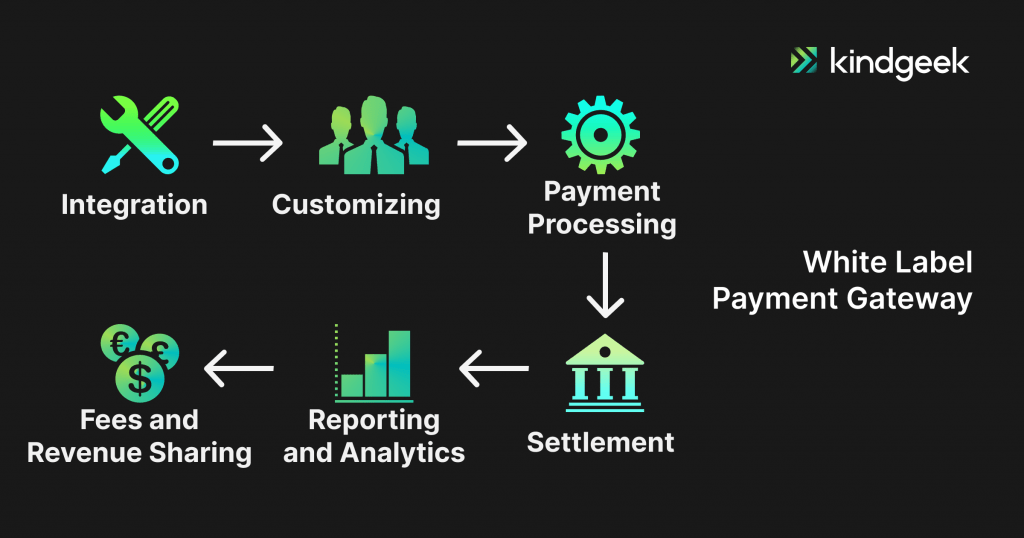
Integration
After choosing a white-label solution, the business is going to integrate the white-label payment gateway into their platform or software.
Customizing
The business can customize the user interface and user experience of the payment gateway to align with their brand. This includes using their own logos, color schemes, and branding elements on the payment pages.
Payment Processing
When a customer makes a payment, the payment information is securely transmitted to the white-label payment gateway for processing. The gateway then communicates with the appropriate payment networks (such as Visa, Mastercard, or PayPal) to authorize and process the payment.
Settlement
After the payment is processed and authorized, the funds are settled into the merchant’s account.
Reporting and Analytics
The business can access detailed transaction reports and analytics through the payment gateway’s reporting tools. This information will help to track sales, monitor payment trends, and make informed business decisions.
Fees and Revenue Sharing
The business typically pays fees to the white-label payment gateway provider based on the volume of transactions processed.
Integrating a white-label payment gateway requires a good understanding of web development, APIs, security practices, and payment industry regulations. It’s crucial to follow the documentation provided by your chosen payment gateway provider and thoroughly test your integration before deploying it to production to ensure a smooth payment experience for your customers.
The Growing Demand for White Label Payment Gateways
The increasing shift toward online and mobile payments shapes the future of white-label payment gateways. Over the past six months, at least 79% of American smartphone owners have shopped online from their mobile devices. With the rise of e-commerce and the growing popularity of mobile commerce, consumers are seeking convenient, secure, and efficient ways to make payments. White-label payment gateways address these needs by offering a seamless and user-friendly payment experience, regardless of the device or platform used.
Furthermore, white-label payment gateways are particularly beneficial for small and medium-sized enterprises (SMEs) that may not have the resources to develop their payment infrastructure. By leveraging white-label solutions, these businesses can quickly and cost-effectively integrate a reliable payment gateway into their operations, allowing them to focus on their core competencies and drive growth.

The Rise of Digital Wallets: Transforming the Way We Pay
Understanding Digital Wallets and Their Functionality
A digital wallet, also known as an e-wallet, is a software-based platform that allows users to store, send, and receive money electronically. It serves as a virtual wallet, enabling users to make payments for goods and services without the need for physical cash or traditional payment methods. Digital wallets can be accessed through various devices, including smartphones, tablets, and computers, making them highly accessible and convenient.
The benefits of digital wallets are numerous, as they offer a range of functionalities that enhance the payment experience. Users can securely store their payment credentials, such as credit card information and bank account details, within the digital wallet. This eliminates the need to manually enter payment details for each transaction, streamlining the checkout process. Additionally, digital wallets often include features like loyalty programs, rewards, and transaction history, providing users with a comprehensive payment management solution. If you`d like to learn more about the pros and cons of digital wallets, then keep reading.
How Does Digital Wallet Work?
A digital wallet software links your payment details from your connected bank account to the vendor that the transaction is being made with.
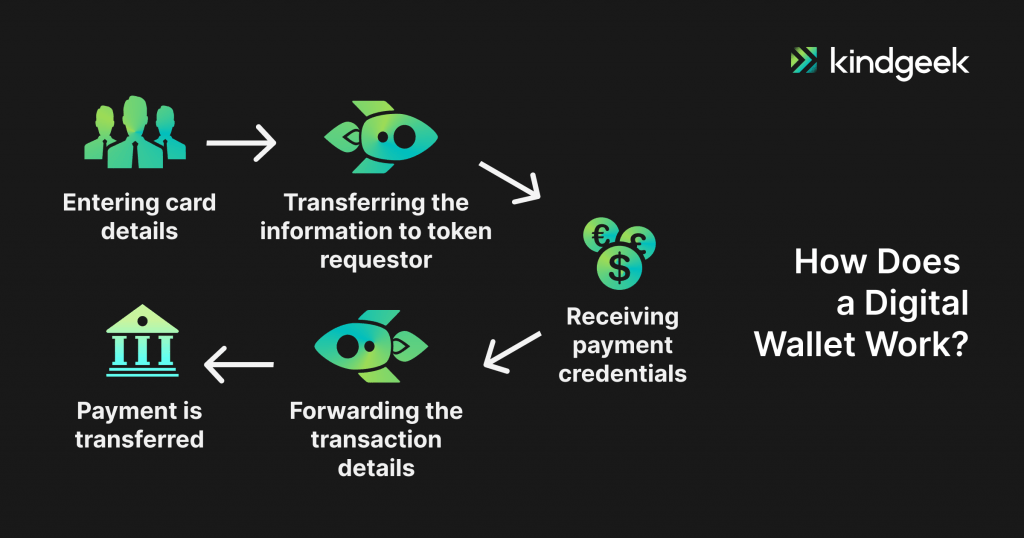
Different digital wallets use different technologies to process payments:
QR codes
QR codes are often used as a convenient means to initiate contactless payments through digital wallets. They streamline the payment process by encoding payment information, which the digital wallet app can quickly access and process, making it easier for users to make secure and efficient electronic transactions.
NFC (Near Field Communication)
It is a short-range wireless communication technology that allows devices to exchange data when they are in close proximity to each other, typically within a few centimeters.
MST (Magnetic Secure Transmission)
This is the same technology that is used by magnetic card readers that read your card when you swipe it through a slot at a point of sale. Your phone generates this encrypted field that the point of sale can read.
Digital wallet integration is mostly API-driven. When you decide to go with a particular digital wallet, the vendor provides you with an API and authorization. Then, you use those API features to integrate the digital wallet into your shopping cart.
The Growth and Potential of the Digital Wallet Market
Rising smartphone adoption, growing consumer interest in contactless payments, and the ease of use of digital wallet solutions have all contributed to the market’s rapid expansion in recent years. According to industry reports, the global digital payments market is expected to exceed trillions of dollars in the coming years, with a projected compound annual growth rate (CAGR) of 11.8% to 20.8% from 2023 to 2030.
According to estimates, there were about 2.8 billion mobile wallet users worldwide in 2022, and this number is projected to rise to more than 5.2 billion by 2026. This exponential growth can be attributed to the increasing adoption of digital wallets in both developed and emerging markets. As consumers become more comfortable with mobile payments and seek faster and more convenient payment options, digital wallets are poised to become the preferred payment method globally, shaping the nearest future for digital wallets in general.
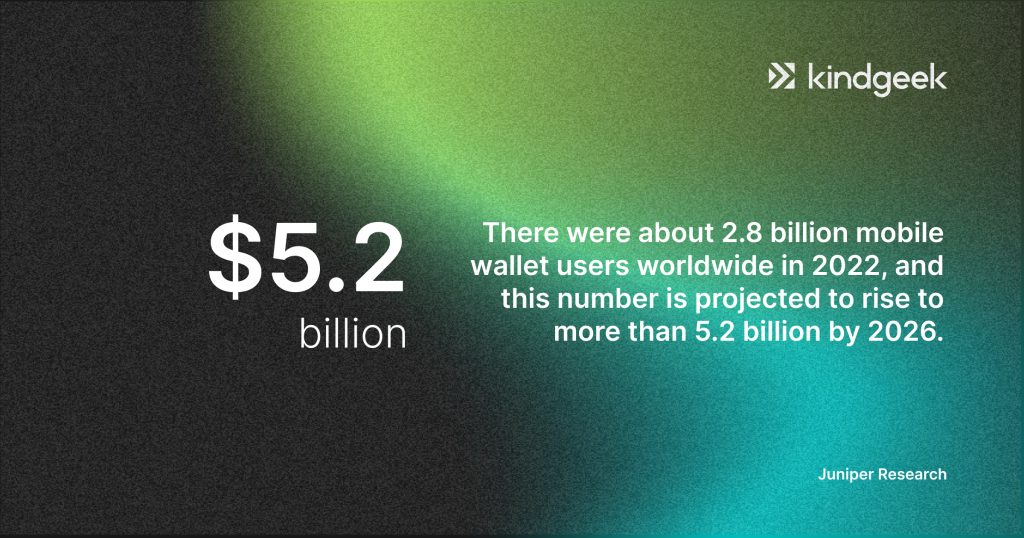
The Advantages of Digital Wallets for Businesses and Consumers
Digital wallets offer several advantages for both businesses and consumers. For businesses, digital wallets provide a secure and efficient payment solution that reduces the risk of fraudulent transactions. By leveraging advanced encryption technologies and tokenization, digital wallets ensure the confidentiality and integrity of sensitive payment information, protecting both the business and its customers.
Moreover, digital wallets enable businesses to offer personalized experiences and targeted marketing initiatives. By analyzing user data, digital wallets can provide insights into consumer spending habits, preferences, and demographics. This valuable information allows businesses to tailor their offerings and promotions to specific customer segments, driving customer engagement and loyalty.
For consumers, digital wallets offer convenience and flexibility. It is no longer necessary to carry cash or credit cards around with you if you have a digital wallet installed on your smartphone. Digital wallets also simplify the checkout process, as users can securely store their payment credentials and complete transactions with minimal effort. Additionally, digital wallets often offer added features such as rewards programs and discounts, further incentivizing their use.
The Synergy Between White Label Payment Gateways and Digital Wallets
Integration and Collaboration Opportunities
While white-label payment gateways and digital wallets serve distinct purposes, these two technologies have a natural synergy. Integrating a digital wallet functionality into a white-label payment gateway can enhance the overall payment experience for both businesses and consumers. By enabling users to securely store their payment credentials within the digital wallet, businesses can streamline the checkout process and reduce friction during transactions.
Moreover, the integration of digital wallets within white-label payment gateways opens up new opportunities for businesses to leverage customer data and deliver personalized experiences. Businesses can gain insights into customer preferences and tailor their offerings by analyzing user behaviour and transaction history. This level of personalization enhances the customer experience and drives customer loyalty and repeat business.
Enhanced Security and Fraud Prevention
The combination of white-label payment gateways and digital wallets also strengthens security measures and reduces the risk of fraud. Digital wallets employ advanced encryption technologies and tokenization to protect sensitive payment information, making them inherently secure. By integrating a digital wallet into a white-label payment gateway, businesses can leverage these security features, ensuring the confidentiality and integrity of customer data.
Furthermore, using digital wallets can mitigate the risk of card-not-present fraud, which is a significant concern for businesses in today’s digital landscape. With digital wallets, users no longer need to enter their payment details for each transaction, reducing the exposure of sensitive information to potential threats. This added layer of security instils confidence in consumers and promotes trust in the payment process.
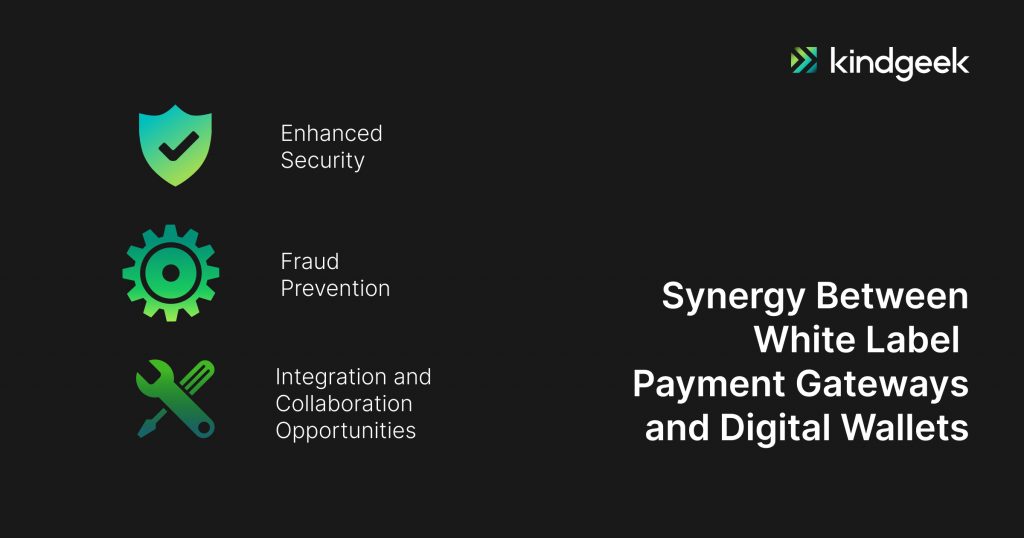
The Future of Banking: Opportunities and Trends
Advancements in Blockchain and Artificial Intelligence
As technology evolves, the future of digital banking trends holds exciting opportunities for white-label payment gateways and digital wallets. Blockchain technology, for instance, has the potential to revolutionize the payment industry by enabling secure and transparent transactions. As blockchain matures, we expect to see wider adoption of blockchain-based digital wallets, enhancing security and trust in the payment ecosystem.
Additionally, integrating artificial intelligence (AI) and machine learning (ML) in digital wallets can further enhance the customer experience. AI-powered digital wallets can analyze user behaviour and transaction data to provide personalized recommendations and insights. This level of customization not only improves the user experience but also enables businesses to deliver targeted marketing campaigns and promotions.
The Importance of Data Privacy and Cybersecurity
As white-label payment gateways and digital wallets become more prevalent, data privacy and cybersecurity emerge as critical concerns. The collection and storage of customer data pose risks related to data breaches and unauthorized access. Businesses must implement robust security measures, such as biometric authentication and multi-factor authentication, to protect sensitive customer information.
Regulatory changes and evolving industry standards will also play a crucial role in shaping the future of digital banking opportunities. Data privacy regulations, such as the General Data Protection Regulation (GDPR), impose stringent requirements on businesses regarding the collection, storage, and processing of customer data. Compliance with these regulations is essential to maintain customer trust and avoid potential legal repercussions.
The Global Expansion of White Label Payment Gateways and Digital Wallets
White-label payment gateways and digital wallets are not confined to a specific region or market. These technologies have gained global recognition and are increasingly adopted by businesses and consumers worldwide. In developing economies, digital wallets play a pivotal role in enabling financial inclusion, allowing the unbanked population to access goods and services without the need for physical cash.
Asian markets, in particular, have emerged as leaders in adopting digital payment technologies. Platforms like Alipay and WeChat Pay in China have revolutionized the concept of “super-apps” as payment platforms, showcasing the potential for innovative business models. Moreover, governments in some regions are actively developing payment infrastructure as part of their industrial policies, aiming to control money flows and foster economic growth.
Case Study
At Kindgeek, we value interesting and challenging projects, such as HyperJar. HyperJar is a smart fintech app offering a unique financial management experience by providing users with a network of mini-accounts and ‘jars.’ Each virtual jar is tailored to the user’s financial purposes and connected to the same smart payment card for convenience.
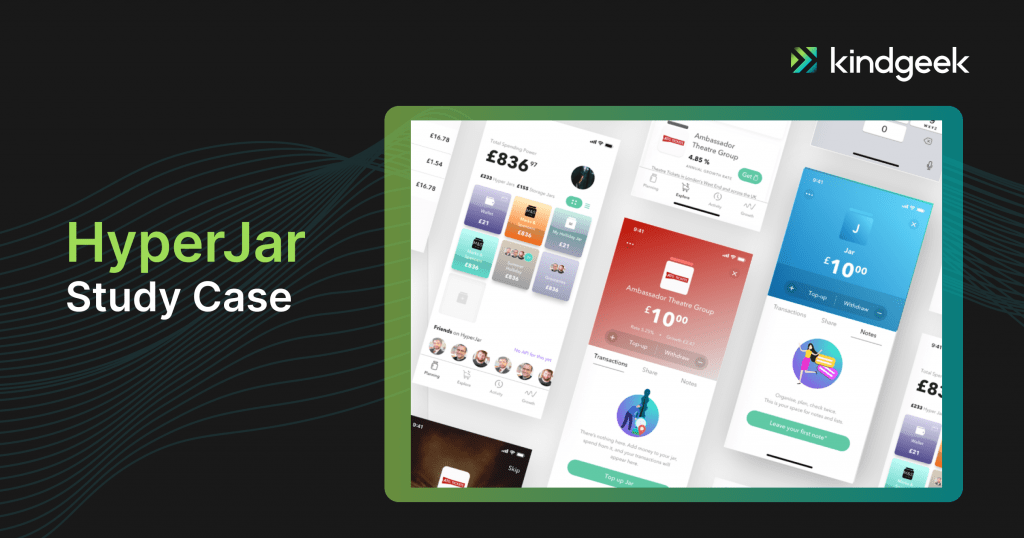
A complex structure of the application required meticulous, even painstaking, crafting of the Back End and Front End to achieve high productivity of the app and easy navigation.
Our developers were remastering the solution, transitioning from a hybrid approach, and transferring the functionality from React native source code to native iOS and Android applications to improve the scalability and performance of the application.
Security was the other major concern during the development of HyperJar. Therefore, we made the QA process the central pivot of our approach to ensure that HyperJar’s defence holds and the app is “bulletproof” against malicious intentions and cyberattacks.
Last but not least, our team had to ensure that seamless navigation and stylish design were not affected by the complex functionality of the application.
After two years of dedicated teamwork, we developed not just a fintech application but a whole financial ecosystem that grants unprecedented budgeting customization on top of being a convenient banking app.
We also make sure that the client’s experience stays smooth and pleasant:
“While the app has not yet launched, testing yielded positive results. Kindgeek is open to feedback, facilitating a collaborative working relationship. Their team is dedicated and resourceful” – Chris Lowrie (COO, HyperJar Limited).
Consider KindGeek as Your Trusted Partner
If you are looking for a white label banking solution, consider us.
Since its launch, Kindgeek has been providing core fintech banking and payment solutions to serve as a software shortcut for businesses looking to launch their fintech products, from digital wallets to neobanks, accommodating startups and enterprise-level customers.
From product discovery services to deployment and beyond, we guide through the whole process of developing fintech products. We build software solutions that resolve core business needs with a product-oriented mindset.
We also provide our own white-label solution – a personalized fintech platform for any brand. So if you’re seeking to build your own fintech product for your company, feel free to book a consultation with our experts.
Final thoughts
The future of banking is undoubtedly intertwined with the growth and development of white-label payment gateways and digital wallets. These technologies have transformed how we make payments, offering businesses and consumers secure, efficient, and convenient solutions. The synergy between white-label payment gateways and digital wallets opens new opportunities for businesses to enhance the payment experience, drive customer engagement, and leverage valuable customer data.
In conclusion, taking into account the pros and cons of white-label payment gateways and digital wallets, they are definitely at the forefront of the future of banking, shaping how we transact and interact with financial services. As businesses and consumers increasingly embrace these technologies, we can anticipate a more seamless, secure, and inclusive banking experience for all.
About the author
The publication was expertly crafted in collaboration with Melody Brynn, a talented freelance writer and aspiring self-published author. The opinions expressed within the content are solely those of the writer, offering unique perspectives and insights.
Do I need a mobile app integration with a payment gateway?
Whether you’re developing an investment app or a mobile marketplace, you need to integrate a payment gateway into a mobile app. The less complicated the payment process is, the more sales you get. Mobile apps with built-in payment gateways run more smoothly, ensuring a quick, easy, and safe checkout experience.
What is the best payment gateway for small businesses?
According to Kindgeek`s research, the best payment gateway for small businesses is Stripe, PayPal, and Authorize.net.
What is a digital wallet?
A digital wallet, also known as an e-wallet, is a software-based platform that allows users to store, send, and receive money electronically.
What are white-label payment gateways?
A white-label payment gateway is a customizable payment processing service that enables businesses to accept online payments from customers using various payment methods.




